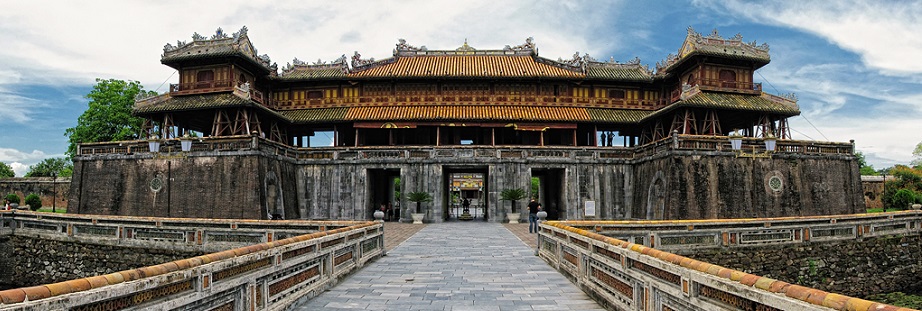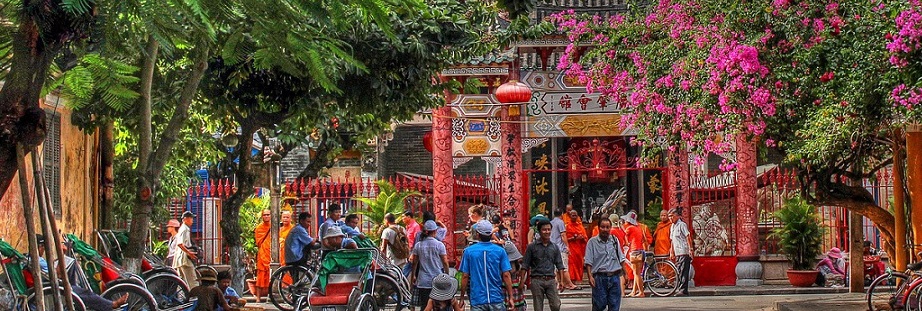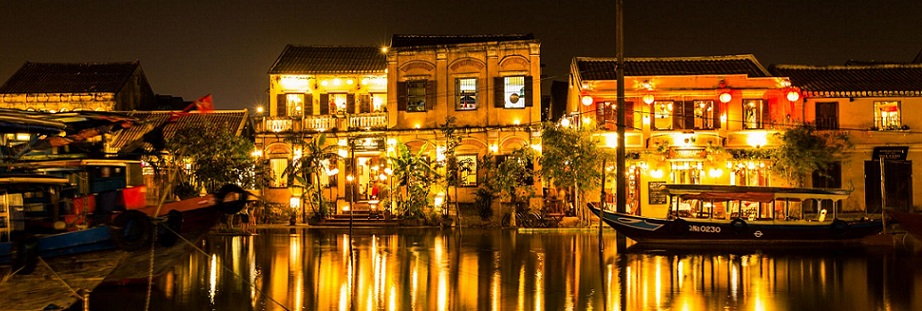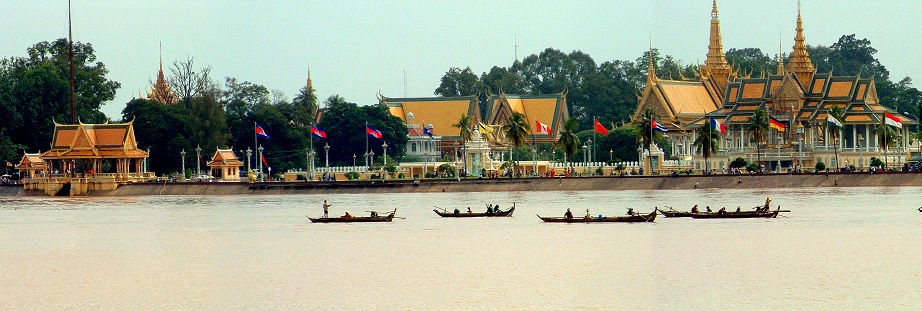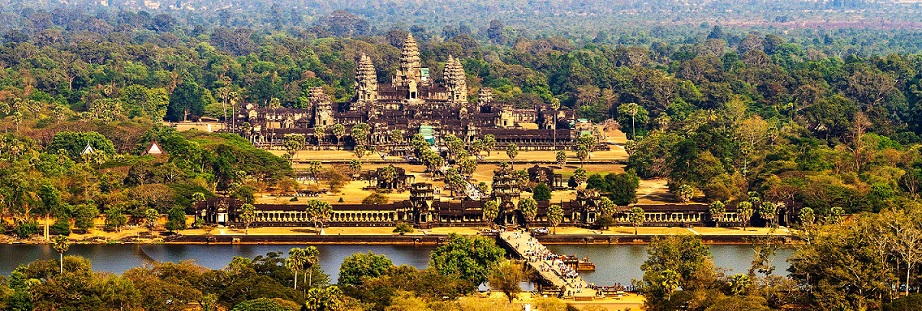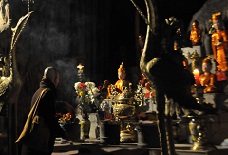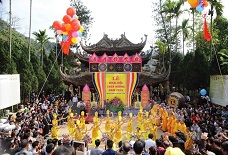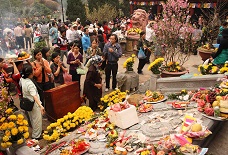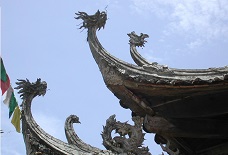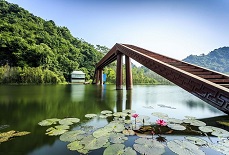Hotline:
0242 2420 777
Email: info@webtravel.vn
Home
›
Vietnam
›
Hanoi Daily Tours
Perfume Pagoda
Perfume Pagoda is famous not only for its scenic landscape but also for its sacredness in the religious culture of Vietnamese people. Unlike other spiritual sites, Perfume Pagoda possesses a good combination of temples, pagodas, moutains and forest; or in other words, a vast landscape complex with harmony of nature and artificial construction. Passing historical up and down over multiple centuries, the Pagoda has carved its image in the mind and the heart of Vietnamese people, who are looking for a peace in soul and put their belief in sacred Buddhism.
Perfume Pagoda is located in Huong Son (Perfume mountain) 70 km southwest of Hanoi. Pefume Pagoda is not one temple but a cluster of temples and shrines in the general vicinity of Huong Son. According to the book, Huong Son Thien Tru Pha, Huong Tich temple was built during the reign of Le Chinh Hoa (1680-1705), by a monk who happened on the site on his way to search for enlightenment. Other shrines and temples were later built in this area to take advantage of the beautiful scenery in this area.
The Perfume Pagoda is one of the highlights of the Hanoi area and one of the most important religious sites in Buddhist Vietnam. Every spring, after the Vietnamese New Year, thousands of Vietnamese pilgrims come here to pray for all the health and prosperity. The pagoda itself is built into limestone cliffs and can only be reached by boat and foot, as there are no roads into this area. You will glide along scenic waterways and walk up steep mountain paths visiting the pagodas and temples that were built in this area over the last centuries.
Perfume pagoda has a long history in Vietnamese literature. This temple, its name, has been a theme of many songs, topic of poetry, used in literary works as well as backdrops for paintings. The uniqueness of Huong Son is that the mountains, river and forest appears like an oasis for buddhists in the middle of the great plains of northern Vietnam. This location truly incorporates all the elements of beauty that is often used in Eastern philosophy and arts.
Perfume Pagoda is located in Huong Son (Perfume mountain) 70 km southwest of Hanoi. Pefume Pagoda is not one temple but a cluster of temples and shrines in the general vicinity of Huong Son. According to the book, Huong Son Thien Tru Pha, Huong Tich temple was built during the reign of Le Chinh Hoa (1680-1705), by a monk who happened on the site on his way to search for enlightenment. Other shrines and temples were later built in this area to take advantage of the beautiful scenery in this area.
 |
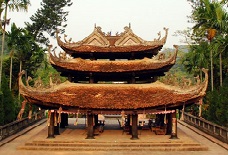 |
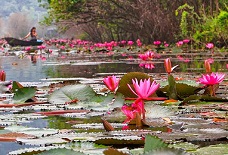 |
The Perfume Pagoda is one of the highlights of the Hanoi area and one of the most important religious sites in Buddhist Vietnam. Every spring, after the Vietnamese New Year, thousands of Vietnamese pilgrims come here to pray for all the health and prosperity. The pagoda itself is built into limestone cliffs and can only be reached by boat and foot, as there are no roads into this area. You will glide along scenic waterways and walk up steep mountain paths visiting the pagodas and temples that were built in this area over the last centuries.
Perfume pagoda has a long history in Vietnamese literature. This temple, its name, has been a theme of many songs, topic of poetry, used in literary works as well as backdrops for paintings. The uniqueness of Huong Son is that the mountains, river and forest appears like an oasis for buddhists in the middle of the great plains of northern Vietnam. This location truly incorporates all the elements of beauty that is often used in Eastern philosophy and arts.
8:30am. Tour guide & Car driver pick you up at your hotel then transfer to Perfume Pagoda (Ha Tay Province). After 2hrs driving, you will arrive at Ben Duc boat harbor. Then you take one hour trip on a small boat-rowed by local people on the stream named Yen. You can deeply enjoy the attractive mountain views mirror-image in the crystal water mirror of the stream en route.
Getting out of the boat, it takes you about 1 hour to trek up to the main Pagoda - Cave on the top of the highest mountain in the range – which is considered as the most beautiful Cave under South Asia sky! Taking photo & learn about Vietnam history, Buddhism religion then trekking down by the same route for lunch time in the restaurant at the foot of mountain. After having lunch you, you are free to visit and take photograph beautiful scenery of the pagodas near by the restaurant. After lunch time, you will visit Thien Tru Pagoda then spending one more hour on the boat back to the harbor, say good bye to local people and drive back to Hanoi. Arrive Hanoi at 6.00pm. Finish the trip at your hotel!
Getting out of the boat, it takes you about 1 hour to trek up to the main Pagoda - Cave on the top of the highest mountain in the range – which is considered as the most beautiful Cave under South Asia sky! Taking photo & learn about Vietnam history, Buddhism religion then trekking down by the same route for lunch time in the restaurant at the foot of mountain. After having lunch you, you are free to visit and take photograph beautiful scenery of the pagodas near by the restaurant. After lunch time, you will visit Thien Tru Pagoda then spending one more hour on the boat back to the harbor, say good bye to local people and drive back to Hanoi. Arrive Hanoi at 6.00pm. Finish the trip at your hotel!
Price: USD45 per person (Join Group Tour)
Tour Cost included:
Meals as mentioned in the itineraries: Vietnamese food, Asian Food basic.
Private transfers within the tour by air-conditioned vehicle, including pick-up and drop-off at hotel.
Boat trip on Yen Stream rowing by local people.
English Speaking Tour guide. Other languages on request
All entrance and sightseeing fees
All taxes & services charge.
Tour Cost Non Included:
Beverages and other meals do not indicate in the program.
Cable Car tickets.
Travel insurance
Personal expenses
Tipping/ Gratuities
Any additional expenses caused by reasons beyond our control such as natural calamities (typhoon, floods), flight delays, rescheduling or cancellations, any accidents, medical evacuations, riots, strikes etc.
Price: USD45 per person (Join Group Tour)
Private tour price
Number in Group Price per person in US$ in party of
1 2 3 - 6
Price 130 85 65
Tour Cost included:
Meals as mentioned in the itineraries: Vietnamese food, Asian Food basic.
Private transfers within the tour by air-conditioned vehicle, including pick-up and drop-off at hotel.
Boat trip on Yen Stream rowing by local people.
English Speaking Tour guide. Other languages on request
All entrance and sightseeing fees
All taxes & services charge.
Tour Cost Non Included:
Beverages and other meals do not indicate in the program.
Cable Car tickets.
Travel insurance
Personal expenses
Tipping/ Gratuities
Any additional expenses caused by reasons beyond our control such as natural calamities (typhoon, floods), flight delays, rescheduling or cancellations, any accidents, medical evacuations, riots, strikes etc.
Other Tours
- Hanoi City Tour
- Halong Bay Full Day Tour
- Hoa Lu - Tam Coc Full Day Tour
- Duong Lam Village full day - 5 in 1 tour
- Bat Trang Ceramic & Dong Ky Carpentry Villages - Full Tour day
- Thay Pagoda, Tay Phuong Pagoda - Van Phuc Silk Village
- Hoa Lu - Trang An Grottoes
- GOLF TOUR IN HANOI - ITINERARY “STAY AND PLAY” PACKAGE FOR 2 PERSONS
Best Of Indochina Travel
© 2015 Best of Indochina. Design by Webtravel.vn
Call us 0242 2420 777 or email info@webtravel.vn


